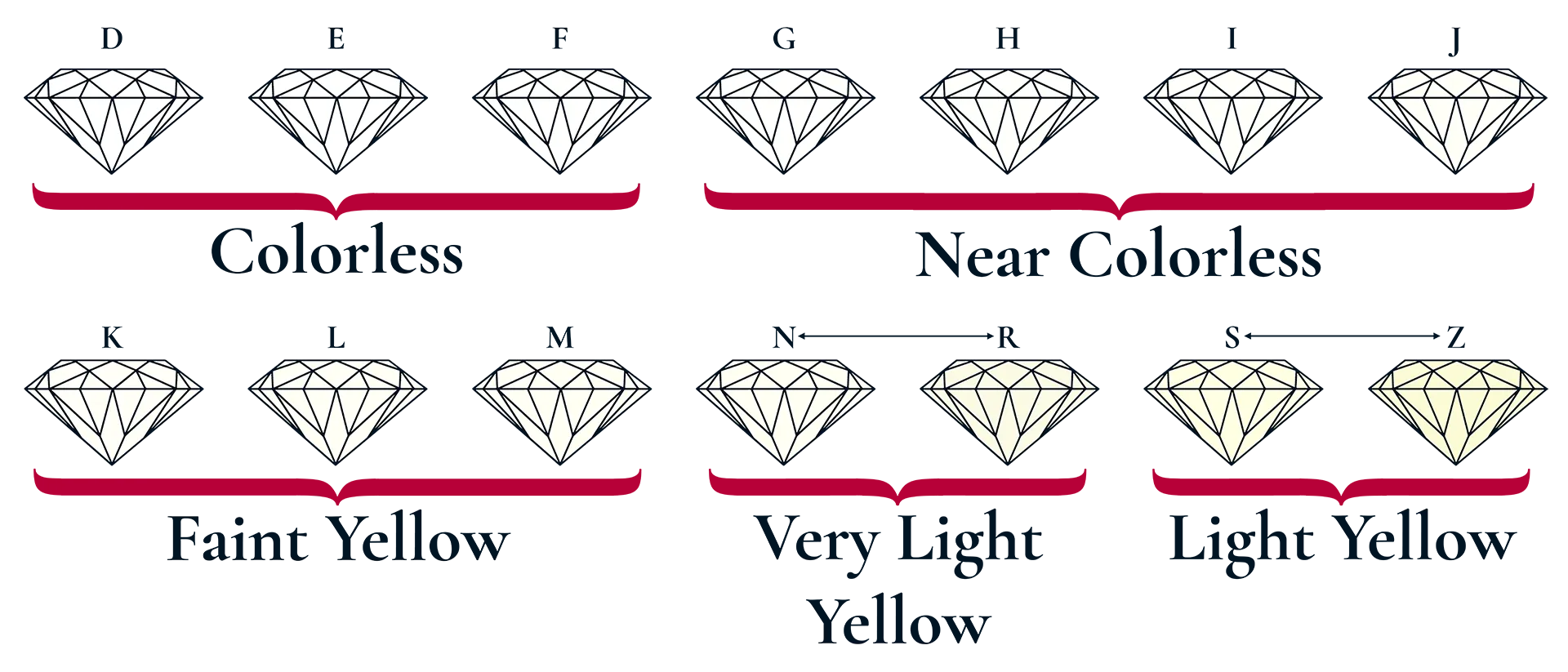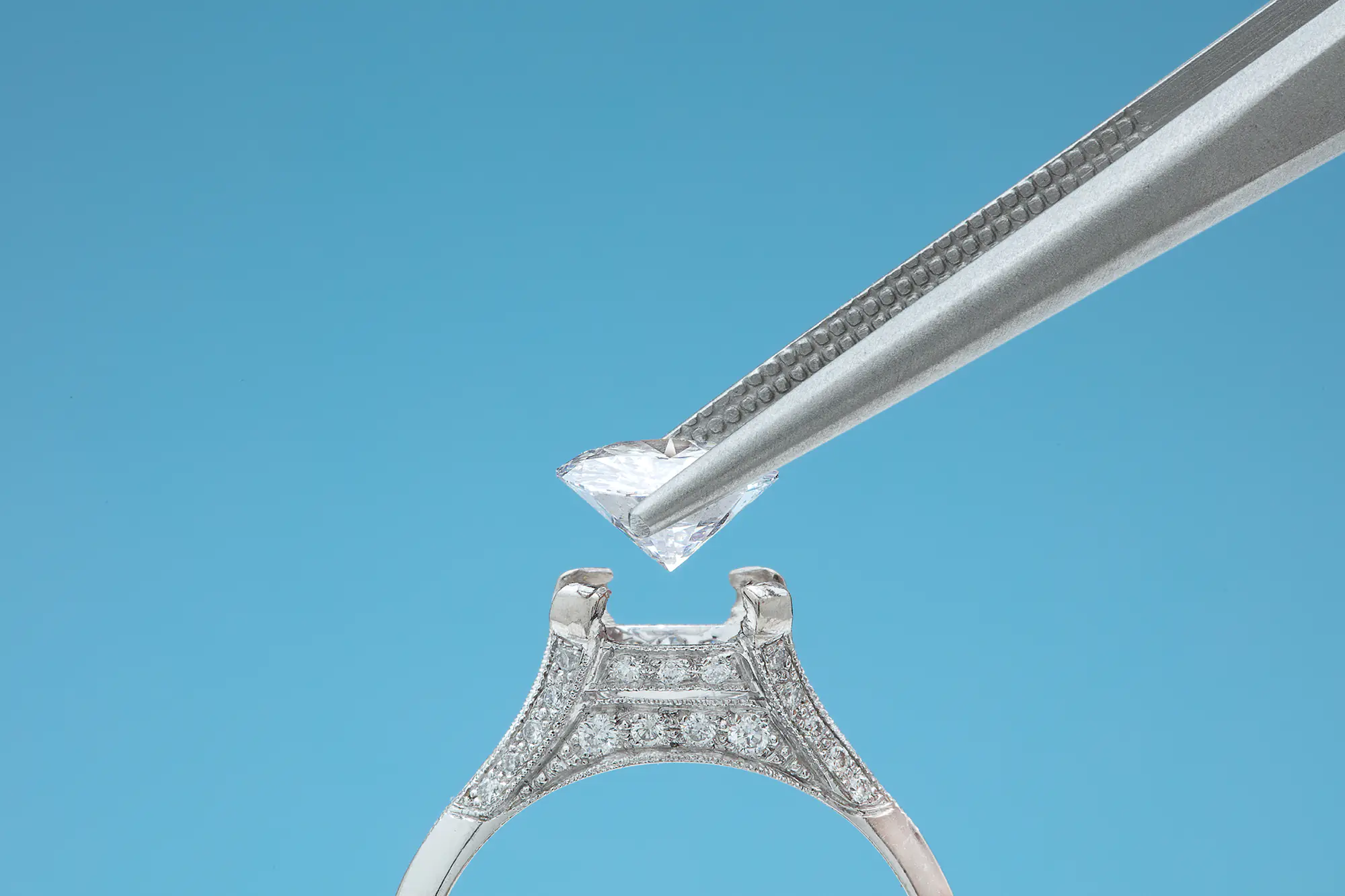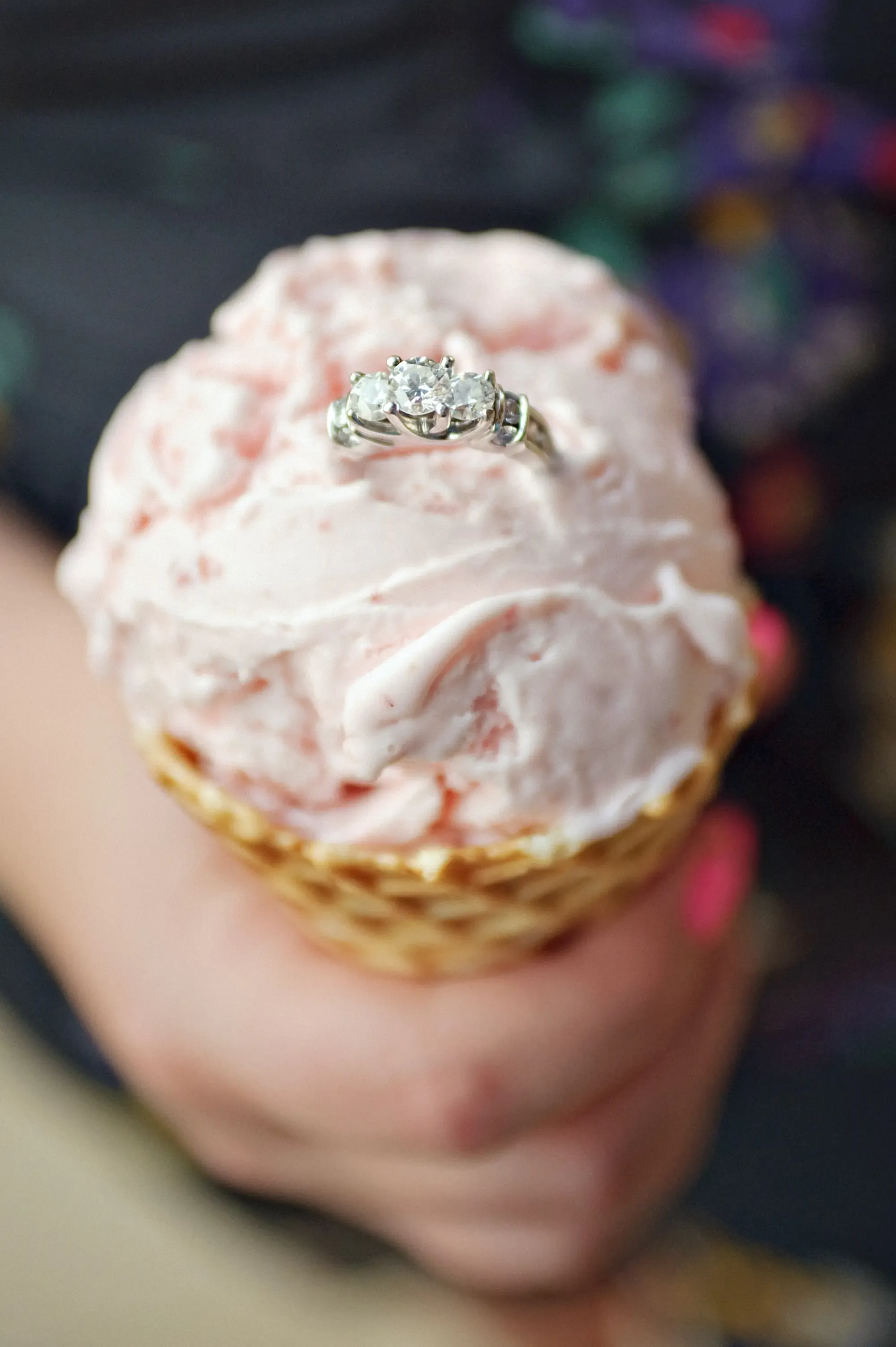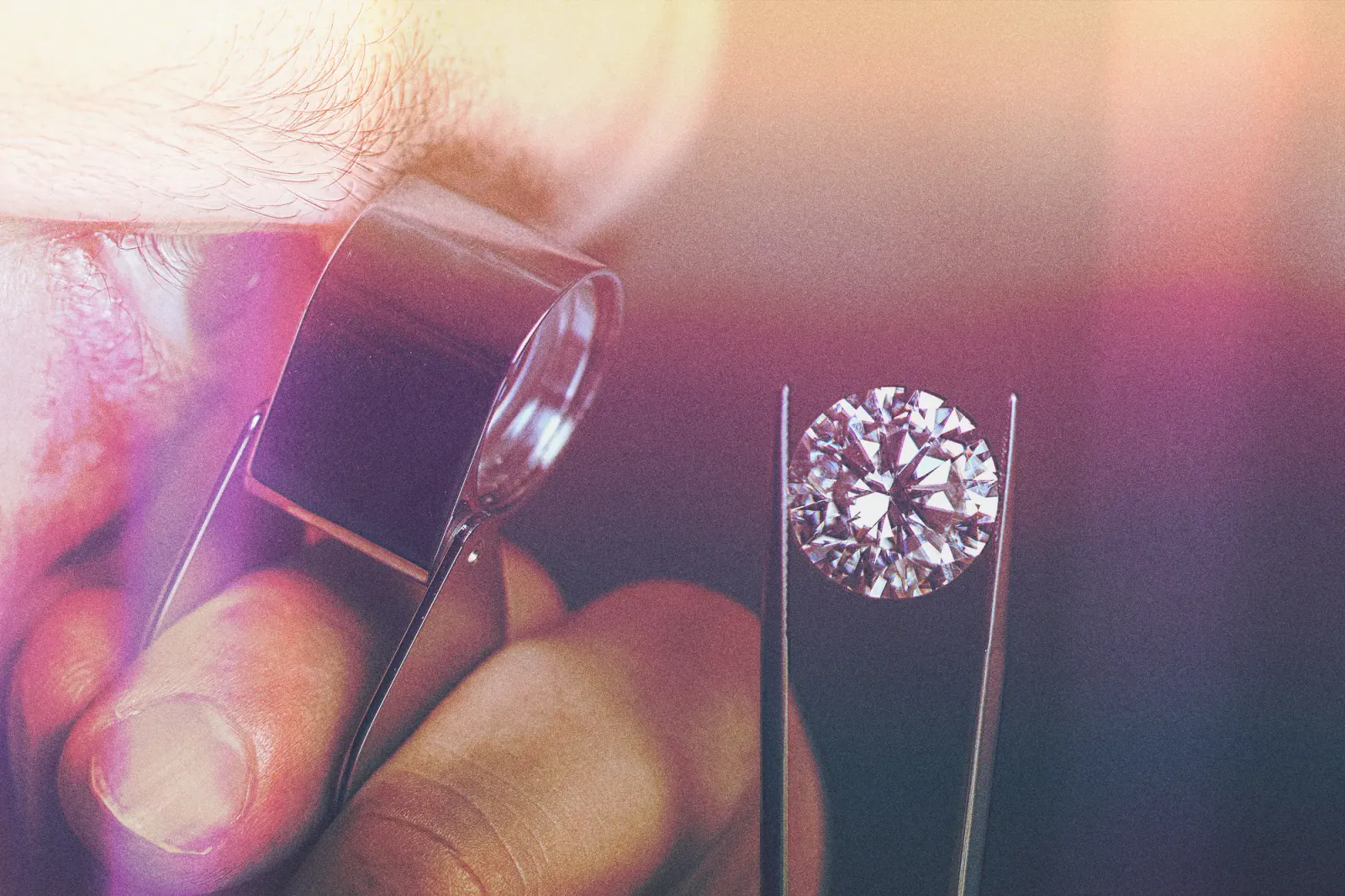Here we explain another of the 4Cs; color. Or, confusingly enough, the absence of color. It's incredibly rare to find a completely colorless diamond, and so the absence of color contributes to its value. Colored diamonds such as pink, blue, yellow and even black are desirable for their beautiful and unusual hues, and are known as 'Fancy Colored' diamonds. White diamonds are graded using the GIA scale from D to Z, with D being completely colorless and Z having a light yellow or even brownish tint. Anything with a stronger color than Z would be on the fancy color diamond scale.

The GIA scale has become the industry standard, so even if your diamond isn't graded by the GIA, the above scale will be referenced. Unsurprisingly you pay a lot more for a colorless diamond than for one that is light yellow.
Why does color matter?
In short, color matters because as you move down the color scale, and color increases, the diamond doesn't interact with light as well, affecting sparkle. A colorless diamond will have a brilliant, icy white look. However, the difference between adjacent grades is subtle in lab conditions, let alone in the real world to the untrained eye. Therefore when choosing a diamond, this is one of the Cs where you can save money.

Diamonds are turned upside down to be graded for color, because this makes the color more obvious (they aren't distractingly sparkly the wrong way up). But your diamond is going to be mounted in a ring, the right way up, so as long as it looks good that way, you're winning. And the shape of the stone, type of setting, and metal the ring is made from all affect how white a diamond looks.
Which color grade should you choose?
D, E and F color diamonds are classified as 'colorless'. The difference between the grades is imperceptible to all but trained gemologists, and each of these grades will appear brilliant ice white. D, E, and F color diamonds should be set in platinum or white gold, so that the color of the metal doesn't reflect back and diminish the colorless quality.
G to J color diamonds are classified as 'near colorless'. Whilst the difference between the D-F colorless diamonds is imperceptible, if you jump from G to J, you'll start to notice. Diamonds in the G category, the highest of the 'near colorless' grades, have some color detected by the diamond grader, but it's near impossible to spot with the naked eye in normal lighting. H diamonds, if well cut, will also have the white look we're after, but go careful if you're choosing a diamond shape with a large table such as cushion or princess cut. There is disagreement about whether the minimum recommended color for these shapes should be H or I - either way, these fancy shapes show color more than round brilliant diamonds, so anything below this and the diamond will start to show its color.
Moving into the K-M 'Faint Yellow' category means the diamond has too obvious a color, detrimental to its look. However, if you're going for an antique style ring, or you're setting it in a warm metal like rose or yellow gold, it could offer incredible value, but these color grades will affect sparkle too.
If you're choosing a ring with side stones, bear in mind that the way diamonds are color graded is through comparison with a master set of stones. By lining stones up in a ring it's easy to compare the diamonds, so ensure that your side stones are either the same color grade as the center stone, or a grade below, which would emphasize the whiteness of the center diamond. If it's a multi stone ring with diamonds of the same size, ensure the are all the same color.

And remember ....
You'll never simply be looking at a diamond's color in isolation; it's qualities are all intertwined, so it's just one part of the puzzle to consider. Cut quality has an affect on our perception of color - a top quality cut results in better light return and therefore a whiter appearance.
The shape of a diamond also affects our perception of its color. Elongated shapes like the pear cut or marquise cut show color in their tips more than a round diamond. Diamonds with a step cut like an emerald or asscher are less sparkly, and therefore show their color more. And the larger table of a princess or cushion cut will also show color more than a round brilliant. Higher carat weights also make color more obvious - the larger the diamond, the more obvious yellow hues will be.
Also think about the color of metal that your ring will be. Gold or rose gold rings will reflect warm light, so can both mask slightly yellow diamonds and also detract from the whiteness of colorless stones. If you're buying at the top of the scale be sure to set your stone in platinum or white gold.
So, as you can see, which color grades to consider is in part down to your personal preferences, but by sticking to a few rules you're on the road to the perfect ring.




